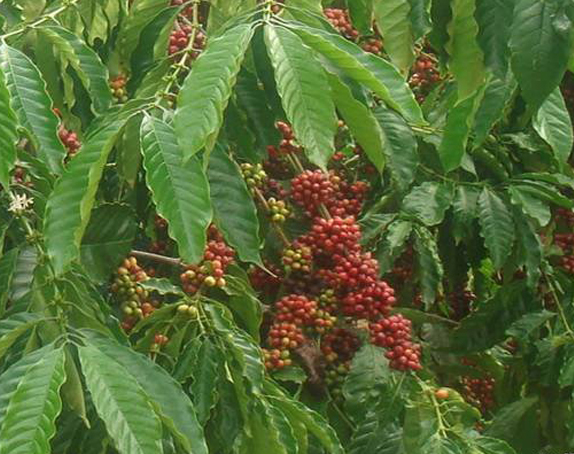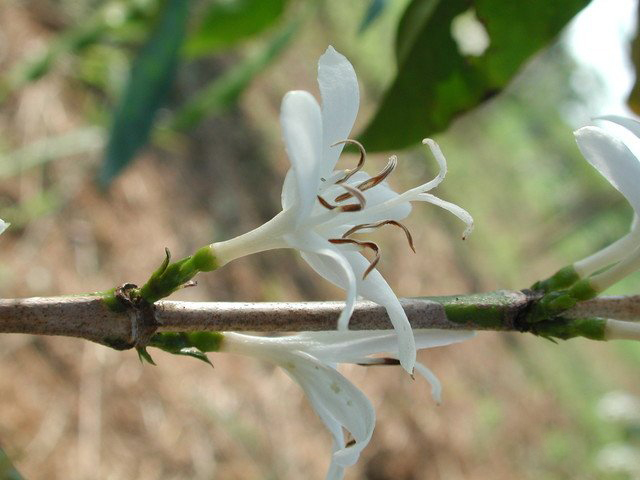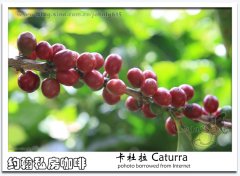Basic knowledge of Coffee
Coffee grows best between latitudes 25 degrees north and 30 degrees south. This region includes the heartland of many countries and parts of South America, Colombia, Africa, India, Asia, the Middle East, and Hawaii.
At present, coffee is produced in about 70 countries, most of which are located in areas with an altitude of 300-400 meters, and sometimes coffee trees are cultivated in highlands with an altitude of 2000-2500 meters. Among them, those planted on hillsides above 1500 meters above sea level have better quality. However, the most suitable conditions for planting coffee are: the average annual rainfall is 1500-2000 cm, and the average temperature is about 20 degrees, and there will be no frost. There are many different types of coffee trees in the world, but the most commonly grown and widely drunk are the Arabica and Robos.

Arabica is the more difficult of the two to grow, but the quality and taste of coffee beans are the best of the two. It is often purchased by coffee shops and served to coffee lovers. Robbs specialty coffee is relatively easy to grow, but of poor quality, although it has a short growing season and can be widely grown. But these characteristics also make Robbs specialty coffee popular in poor coffee growing areas. Robbs specialty coffee is also often used in coffee blends to make instant coffee and is sometimes used by merchants to reduce costs of commercial blends.
Good coffee is grown on coffee plantations, ranging from small plantations to large plantations with millions of coffee trees. It takes 3 to 5 years from planting coffee seeds to ripening, especially for Arabic species. Seeds are initially planted in cultivation beds and are not transplanted into coffee plantations until a year or a year and a half later. Coffee trees can grow up to 20 feet tall, but they are usually kept to about 6 feet.

Coffee trees bloom for six months, and when they do, a jasmine aroma fills the air. After about 6 months the red berries are ripe and ready for picking. If there is plenty of rain throughout the year, coffee will bloom and bear fruit at the same time. During such seasons, dedicated baristas manually pluck coffee berries from the same tree over and over again. Another method is machine picking: the flowers, ripe coffee cherries and immature coffee cherries are picked at the same time. This method of picking can reduce the quality of coffee in certain cases.
Important Notice :
前街咖啡 FrontStreet Coffee has moved to new addredd:
FrontStreet Coffee Address: 315,Donghua East Road,GuangZhou
Tel:020 38364473
- Prev

Kaddura, a natural variety of bourbon
If you often look at the contents of coffee, you may see such names as bourbon / bourbon bourbon, yellow bourbon yellow bourbon, Kaddura Caturra, Kaduai Catuai, iron pickup Typica and so on. In fact, these are different varieties of Arabica coffee, and people who are not clear may be a little confused. In fact, I am not a botanist or a coffee specialist.
- Next

Coffee common sense the way to taste a cup of fine coffee
How can we drink good coffee? why do we usually drink coffee so bitter that it doesn't taste like what the experts and teachers say? the main reason is that we don't know the correct way to drink and use the coffee. Coffee is different from other drinks, its shelf life is very short, basically, if it exceeds the prescribed drinking time, it will become bad.
Related
- Beginners will see the "Coffee pull flower" guide!
- What is the difference between ice blog purified milk and ordinary milk coffee?
- Why is the Philippines the largest producer of crops in Liberia?
- For coffee extraction, should the fine powder be retained?
- How does extracted espresso fill pressed powder? How much strength does it take to press the powder?
- How to make jasmine cold extract coffee? Is the jasmine + latte good?
- Will this little toy really make the coffee taste better? How does Lily Drip affect coffee extraction?
- Will the action of slapping the filter cup also affect coffee extraction?
- What's the difference between powder-to-water ratio and powder-to-liquid ratio?
- What is the Ethiopian local species? What does it have to do with Heirloom native species?

